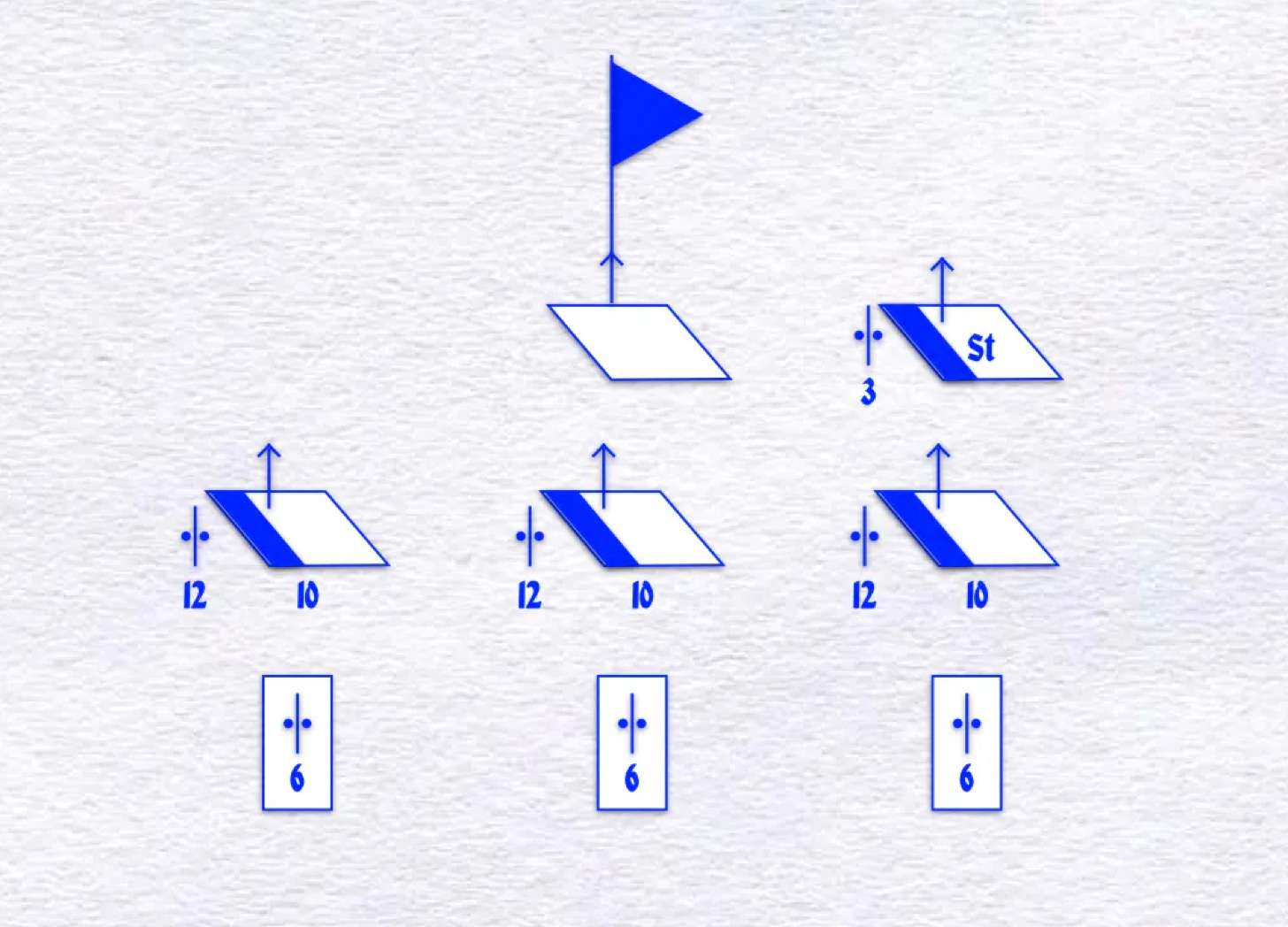Some sets of tactical symbols provide information that other sets leave out. Compare, for example, the two diagrams on this page, each of which depicts a battalion-sized assault gun “brigade” of the last year or two of the Second World War. Using the German hieroglyphs of that era, a draftsman can depict the fact that the assault guns of the battalion are capable of destroying tanks and that the component elements of the battalion are well supplied with light machine guns. Using present-day NATO symbology, the draftsman can only show the presence of armored vehicle companies and infantry platoons. Neither set of symbols is able to communicate the fact that the units depicted as infantry platoons are in fact “assault gun escort platoons” composed of artillerymen and combat engineers who have been cross-trained as tank riders.
The diagram assembled from NATO symbols could be made more information if the draftsman borrowed the “assault gun” symbol from the set of special symbols created by Leo Niehorster. Likewise, he might use the glyph recently adopted by the US Army for its “Mobile Protected Gun System.” After all, some people like to refer to that wheel-mounted an “assault gun.” He might even modify the latter glyph to communicate the fact that the vehicle in question is both armored and tracked.





